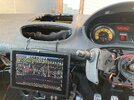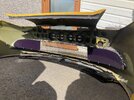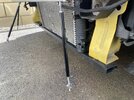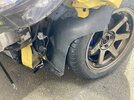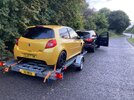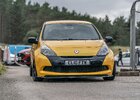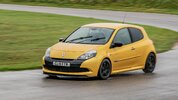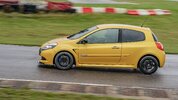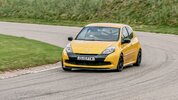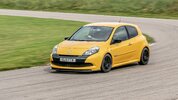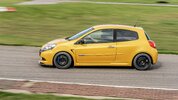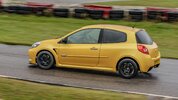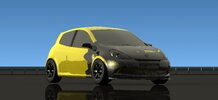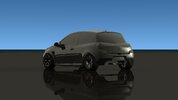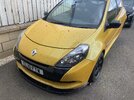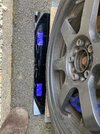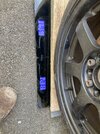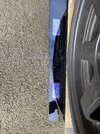Yeah no probs I’ll do a post tonight when I can get to my pc and notes. I made a choice not to cut into the body or go fibreglass etc, partly on cost and mostly on making sure I had covered all other options before resorting to that.
The engine is stock internally but with a lighter flywheel, lighter exhaust pulley, crank pulley and the aux belt has no idler pulley and the alternator is under driven as I’ve used a clio mk2 crank pulley. So somewhere close to 5kg off the rotating mass. Also on the day of the dyno the wheels fitted were 16’s with 205/45/16 tyres at 15kg a corner vs the stock 17 inch speedlines at about 19.5kg a corner so roughly 18kg of wheel weight less in total and a 5-6% shorter gearing aswell. So you can see where some weight has been saved too.
The dyno I used is known to be quite accurate but it’s also an inertia dyno so as I understand it the reduction in rotating weight plus gearing is picked up by this type of dyno resulting in the higher wheel power figure. On a brake type dyno I’m not sure the result would be the same, would likely show its just a very healthy stock engine. The thing that matters though is the weight reduction of the rotating parts on the engine, plus the less weight to rotate in the wheels etc does translate into faster acceleration so the dyno is reflecting that. At least that’s my undereducated understanding of it.
The engine is stock internally but with a lighter flywheel, lighter exhaust pulley, crank pulley and the aux belt has no idler pulley and the alternator is under driven as I’ve used a clio mk2 crank pulley. So somewhere close to 5kg off the rotating mass. Also on the day of the dyno the wheels fitted were 16’s with 205/45/16 tyres at 15kg a corner vs the stock 17 inch speedlines at about 19.5kg a corner so roughly 18kg of wheel weight less in total and a 5-6% shorter gearing aswell. So you can see where some weight has been saved too.
The dyno I used is known to be quite accurate but it’s also an inertia dyno so as I understand it the reduction in rotating weight plus gearing is picked up by this type of dyno resulting in the higher wheel power figure. On a brake type dyno I’m not sure the result would be the same, would likely show its just a very healthy stock engine. The thing that matters though is the weight reduction of the rotating parts on the engine, plus the less weight to rotate in the wheels etc does translate into faster acceleration so the dyno is reflecting that. At least that’s my undereducated understanding of it.
Last edited:




